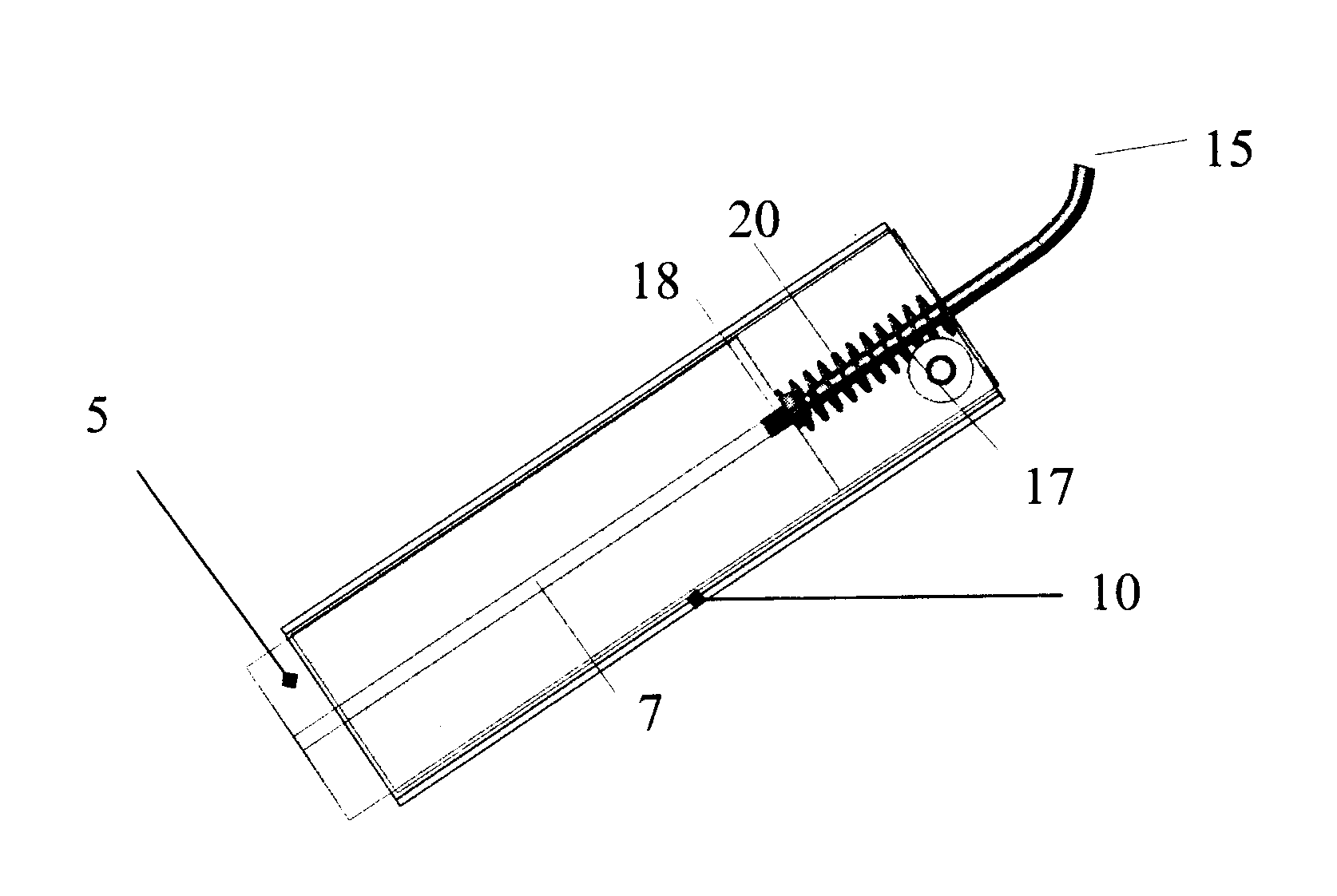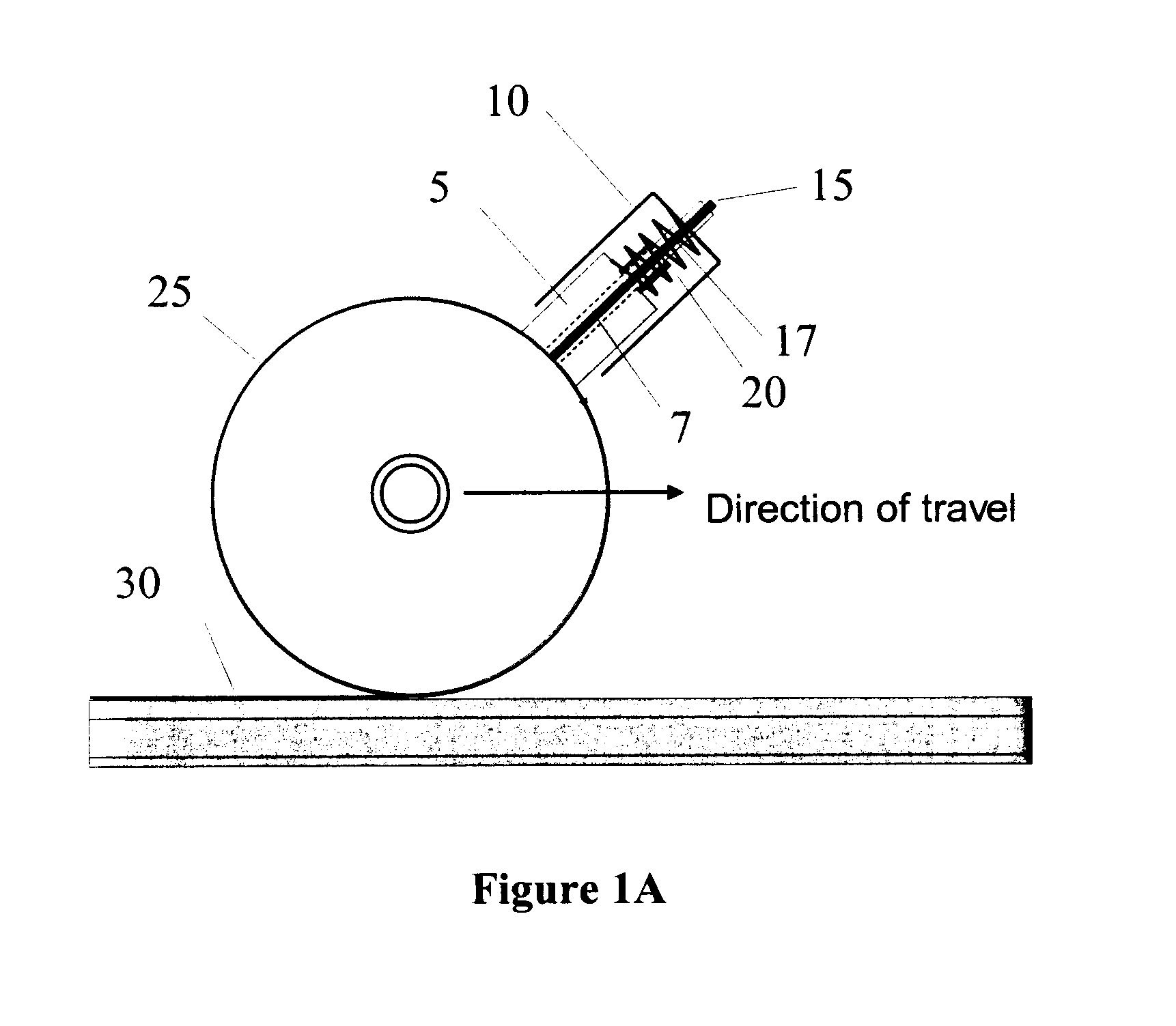Consumable Applicator
- Summary
- Abstract
- Description
- Claims
- Application Information
AI Technical Summary
Benefits of technology
Problems solved by technology
Method used
Image
Examples
example 1
Pump Calibration
[0074]A pump was used to deliver the liquid composition onto the test steel wheel of a stick testing apparatus (described in Example 2) at a flow rate of 0-150 ml / min. The flow rate was checked at different dial settings to determine its practical performance. The pump's performance followed the equation y=0.1332x−0.6273, where x is the dial setting and y is the flow rate in ml / min.
[0075]Typical product application rates for mobile delivery systems being used for Freight applications range between 25 and 50 ml / mile. The volumetric flow rate required is dependant on the speed of the train. Table 1, below shows required flow rates and dial settings for different speeds and output rates.
TABLE 1Required volumetric flow rateDesiredRequiredProduct OutputSpeedFlow RateContinuous(ml / mile)(mile / hr)ml / hourml / minDial Setting25102504.173630103005.004335103505.834940104006.675545104507.506150105008.336725205008.3367302060010.0080352070011.6792402080013.33105452090015.001175020100...
example 2
Stick Testing Apparatus (STA Testing)
[0076]A Stick Testing Apparatus (STA) and test method as described in WO 2008 / 089572 (which is incorporated herein by reference), was modified, as described below, to test the consumable applicator of the present invention.
[0077]As shown in FIG. 5A, the STA comprises a frame for mounting the following components: a standard stick mounting bracket (35), which receives the consumable applicator; an abrasion resistant steel main wheel (60). As shown in FIG. 5B, the Stick Testing Apparatus further comprises a doctor blade (70) downstream of the mounting bracket and a counter rotating wire brush (80) downstream of the doctor blade.
[0078]The STA provides a rolling surface with speeds up to 60 mph (97 km / h). The diameter of the STA test wheel is 14 inches (35.56 cm) and has a surface width of 3 inches (7.62 cm).
[0079]The liquid friction control composition leaves a thin film on the surface of the wheel which transfers to the surface of the rail upon con...
example 3
Tests of Consumable Applicator with One Conduit
[0081]Tests were conducted with a consumable applicator comprising one conduit in the center of the applicator (see FIG. 1D). The diameter of the conduit was ⅛″ (3 mm), however conduits having other diameters may be used as required, for example from about 1 / 16″ to about ¼″ ar any diameter therebetween. The cross section dimensions of the applicator were 2 3 / 16″ (55.5 mm) by 1 3 / 16″ (30 mm). The applicator was made from a solid high positive friction control composition as described in U.S. Pat. No. 7,045,489 (which is incorporated herein by reference). The test showed that a thin film of liquid friction control composition is transferred to the wheel. At normal flow rates the film band spread approximately 0.5 inch (12.7 mm) across the width (tread) of the wheel.
[0082]At high flow rates (100 ml / min) and slow speeds (10 mph), the band of liquid friction control composition was 1.5″ (38.1 mm) wide.
TABLE 2Film Band width at different flow...
PUM
| Property | Measurement | Unit |
|---|---|---|
| Fraction | aaaaa | aaaaa |
| Fraction | aaaaa | aaaaa |
| Fraction | aaaaa | aaaaa |
Abstract
Description
Claims
Application Information
 Login to View More
Login to View More - R&D
- Intellectual Property
- Life Sciences
- Materials
- Tech Scout
- Unparalleled Data Quality
- Higher Quality Content
- 60% Fewer Hallucinations
Browse by: Latest US Patents, China's latest patents, Technical Efficacy Thesaurus, Application Domain, Technology Topic, Popular Technical Reports.
© 2025 PatSnap. All rights reserved.Legal|Privacy policy|Modern Slavery Act Transparency Statement|Sitemap|About US| Contact US: help@patsnap.com



